Published Jun 6, 2024
The Infinite Diversity of Star Trek: Discovery's 32nd Century
A guide to the vibrant variety of sentient species we met during our trip through the 32nd Century!
SPOILER WARNING: This article contains story details and plot points for the fifth season of Star Trek: Discovery.
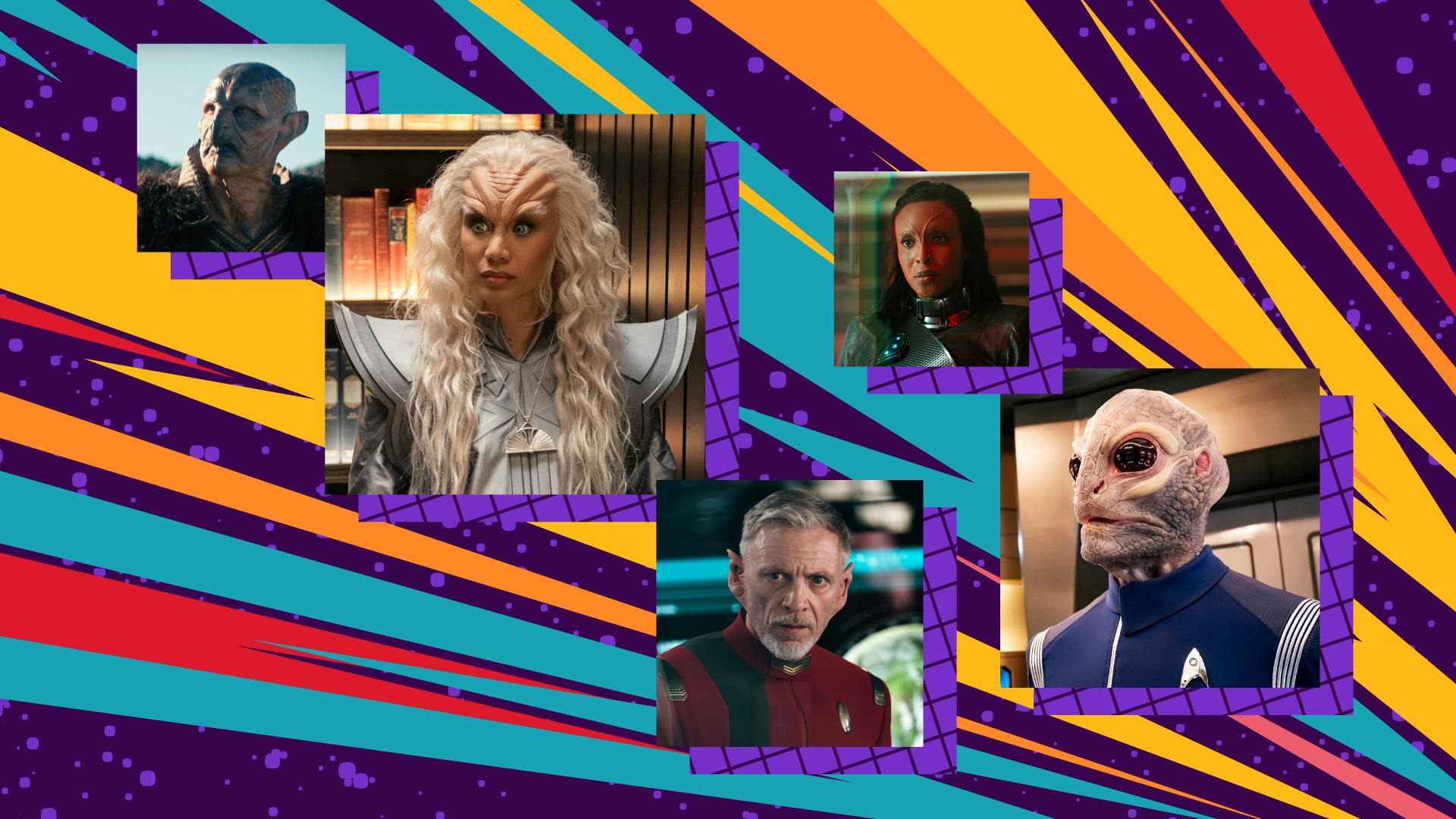
StarTrek.com
The quest for the ' life-changing technology came to an astonishing conclusion in 's series finale, "," as Captain Michael Burnham decided that such power was too great for any one individual or culture to wield. Since the Progenitors had brought infinite diversity in infinite combinations to the galaxy when they seeded humanoid life throughout the stars, Captain Burnham justifiably believed that the technology's mission had already been fulfilled.
The captain's astute observation was backed up by the vibrant variety of sentient species we met during our trip through the 32nd Century. As our investigation into Discovery's cultural tapestry begins, we'll focus on some old friends who received more time in the spotlight and the new civilizations which were introduced by the series.
A Kwejian Connection

"The Sanctuary"
StarTrek.com
Cleveland "Book" Booker's appearance at the moment Michael Burnham arrived in the distant future in "That Hope Is You, Part 1" represented our first contact with the Kwejian, an empathic species capable of communicating with other beings. This fostered a strong connection between the Kwejian and the natural world, as they found great meaning in their planet’s all-encompassing World Root and the heirlooms created from its sap.
Sadly, the Dark Matter Anomaly (DMA) destroyed the Kwejian homeworld in "Kobayashi Maru," leaving Book as one of the last living Kwejian. Despite these hardships, Book continued to cherish the Kwejian way of life by connecting with lifeforms and safeguarding a World Root cutting. The birth of Leto, the son of Book and Burnham, guaranteed that the Kwejian culture would survive into the 33rd Century.
The Betelgeusian Resurgence
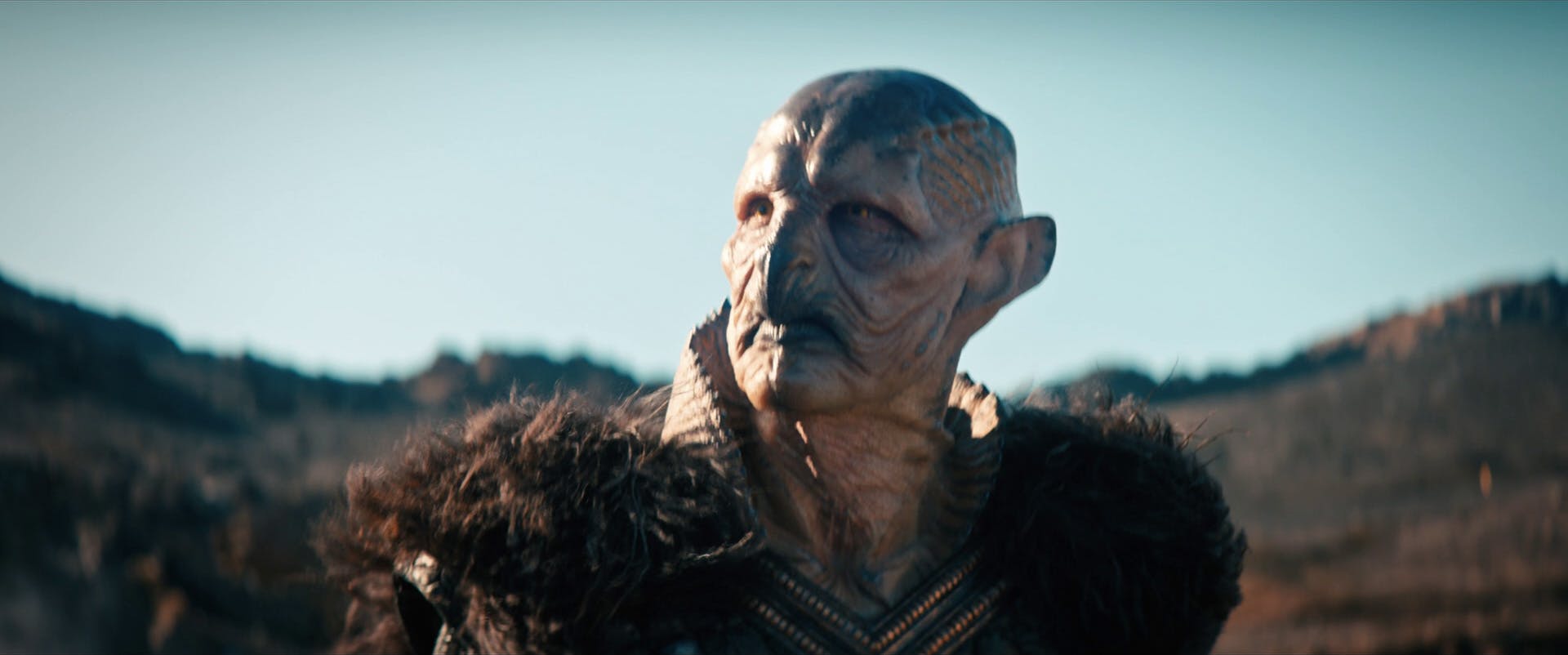
"That Hope Is You, Part 1"
StarTrek.com
Our earliest 32nd encounters also allowed us to meet Cosmo Traitt, an unscrupulous Betelgeusian courier who trafficked in trance worms. First seen among a crowd of U.S.S. Enterprise crew members in and later glimpsed in Jett Reno's triage unit aboard the U.S.S. Hiawatha in "Brother," the Betelgeusian species finally took center stage… at least until the Emerald Chain chose to vaporize him for permitting his cargo to get stolen.
In "," we learned that Commander Yor, a Betelgeusian time soldier, had been the only individual known to have traveled forward in time and across from another dimension prior to the Terran Philippa Georgiou accomplished the same feat. Unfortunately, Yor experienced a grisly death as every molecule in his body fought to either go back in time or return to the Kelvin Timeline.
Understanding the Alshain
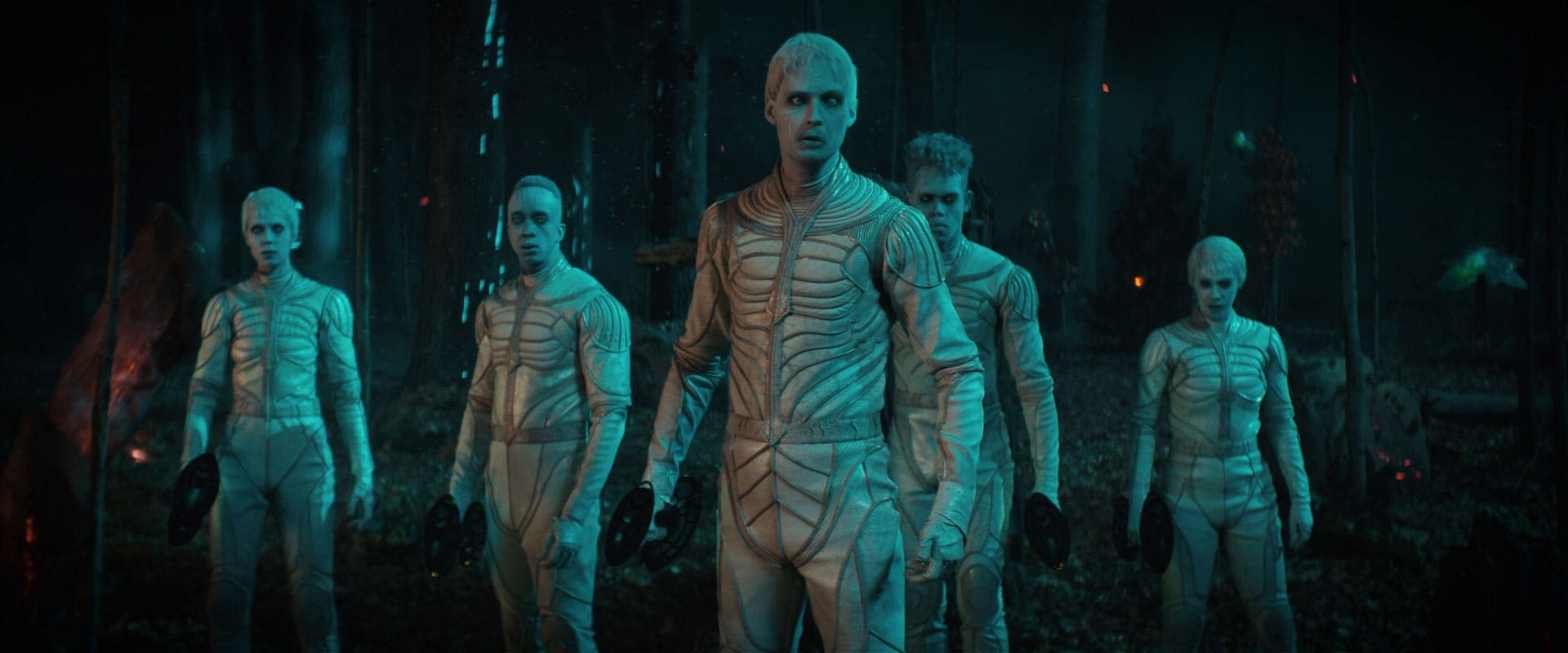
"Kobayashi Maru"
StarTrek.com
Ruled by Emperor Lee'U, the Alshain greeted Captain Burnham and Book with skepticism when the Federation offered to provide them with "no strings attached" dilithium in "Kobayashi Maru." With a reverence for monarchs and an apparent aversion to carnivores, the Alshain misunderstood Grudge's presence aboard Book's starship and nearly executed their friendly visitors.
Able to deploy delicate wings and utilize their planet's magnetic fields to navigate, the Alshain were forced to build satellites to help compensate for their world's shifting magnetic poles. Those artificial structures needed dilithium to operate, and Burnham's decision to reactivate the equipment played a significant role in easing tensions. The emperor opted to attend the Federation's emergency conference pertaining to the DMA, even going so far as to voice support for the diplomacy and courtesy Burnham exhibited toward his people.
The Eccentric Akoszonam
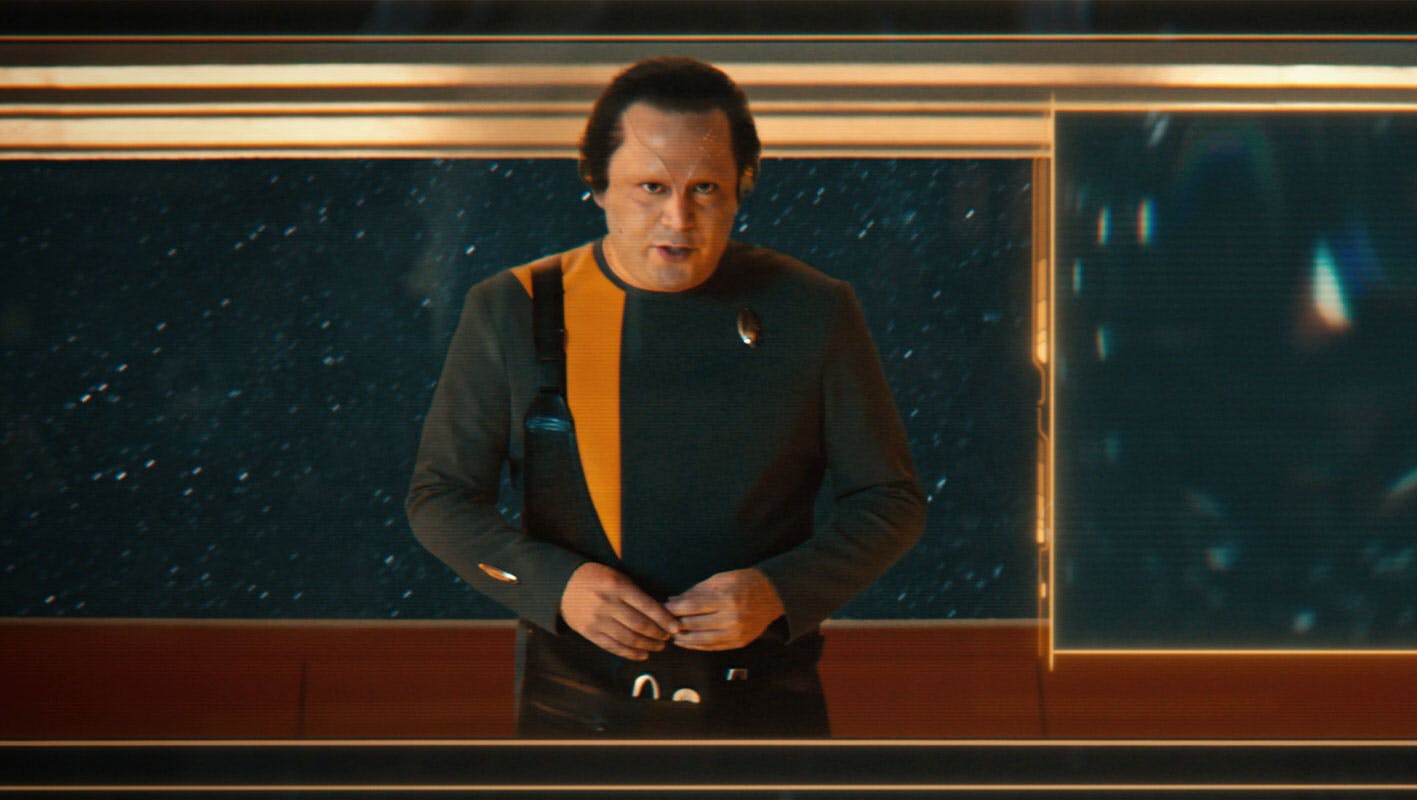
"Kobayashi Maru"
StarTrek.com
Although the Akoszonam only recently made their Star Trek debut in the Short Trek "Children of Mars," Discovery found an Akoszonam named Kanak working as one of Osyraa's Emerald Chain regulators in "." While that individual endured an icy fate when she was launched out into the frozen void, another Akoszonam also perished in grim fashion during the events of "Kobayashi Maru."
Commander Nalas, the anxious officer who oversaw Starfleet's Deep Space Repair Beta Six, taught us the Akoszonam term "squiddled" — their word for "destroyed beyond repair" — and was impressed that President Laira Rillak knew of his homeworld's wondrous Fissure of Jorat. Panic gripped Nalas after the DMA interfered with his station, and he ultimately died in a fiery crash before he could safely reach Discovery's shuttlebay.
The Stately Saurian
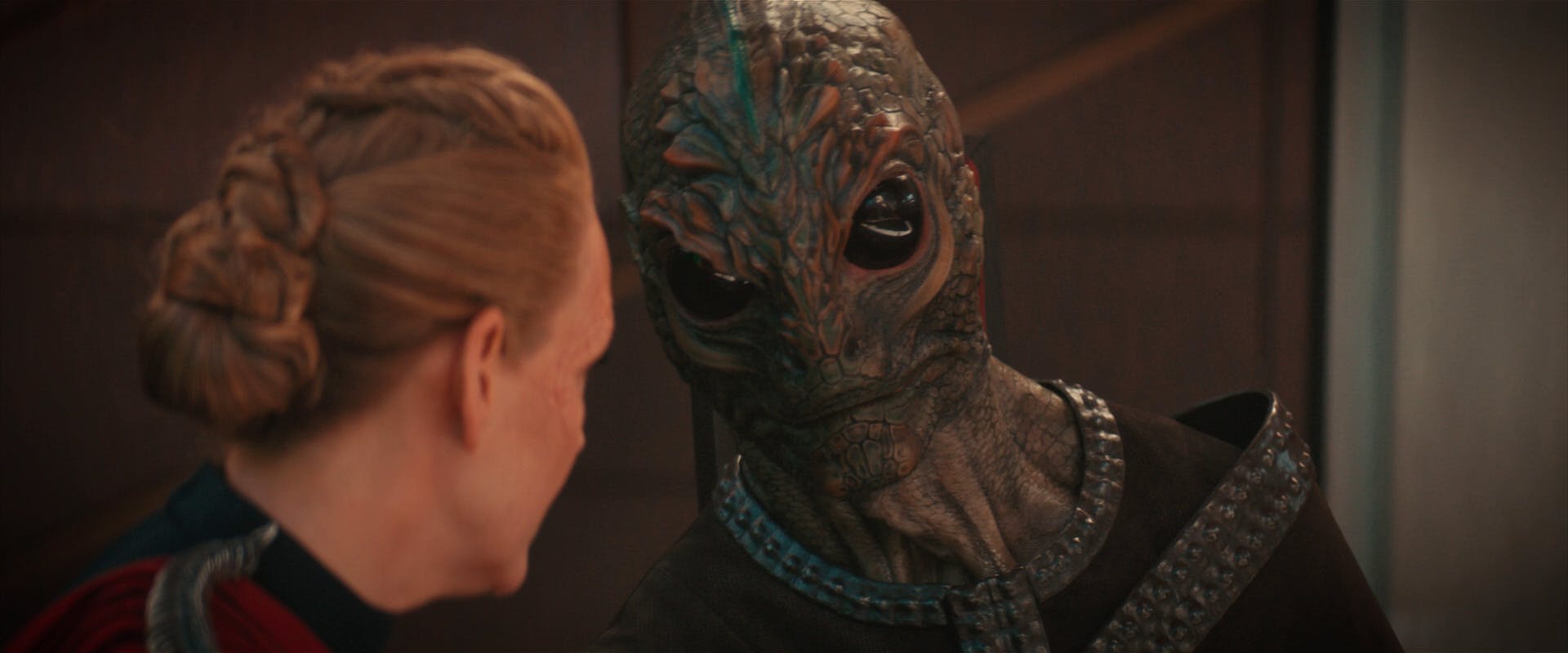
"All is Possible"
StarTrek.com
The Saurians made their comeback in the form of Discovery's own Linus in Season 2, but the presence of a Saurian delegate at the final sessions of the Federation's negotiations to bring Ni'Var back into the fold in "" confirmed that the culture, famous for its Saurian brandy and yet another species introduced via a background character in The Motion Picture, thrived within the government body during the 32nd Century.
And, as an added bonus, we were treated to more run-ins with Linus across the show's last three seasons.
Haz Mazaro's Magic

"All In"
StarTrek.com
Even though his species was never mentioned by name, the multifaceted proprietor of Haz Mazaro's Karma Barge made quite the impression in "All In." Always prepared with a clever nickname for his customers or a creatively descriptive saying, Haz Mazaro ran a gambling establishment at the front of his business and presided over illicit sales in its back room.
A friend of both Burnham and Book, his facility became a hub for galactic controversy when the captain deduced that her partner would go to Haz to obtain isolynium for Ruon Tarka's unauthorized anti-DMA weapon. Haz's personality displayed an odd blend of extroverted affection and nefarious intentions, but he seemed to genuinely consider Book and Burnham to be his friends.
An Entreaty to Species Ten-C
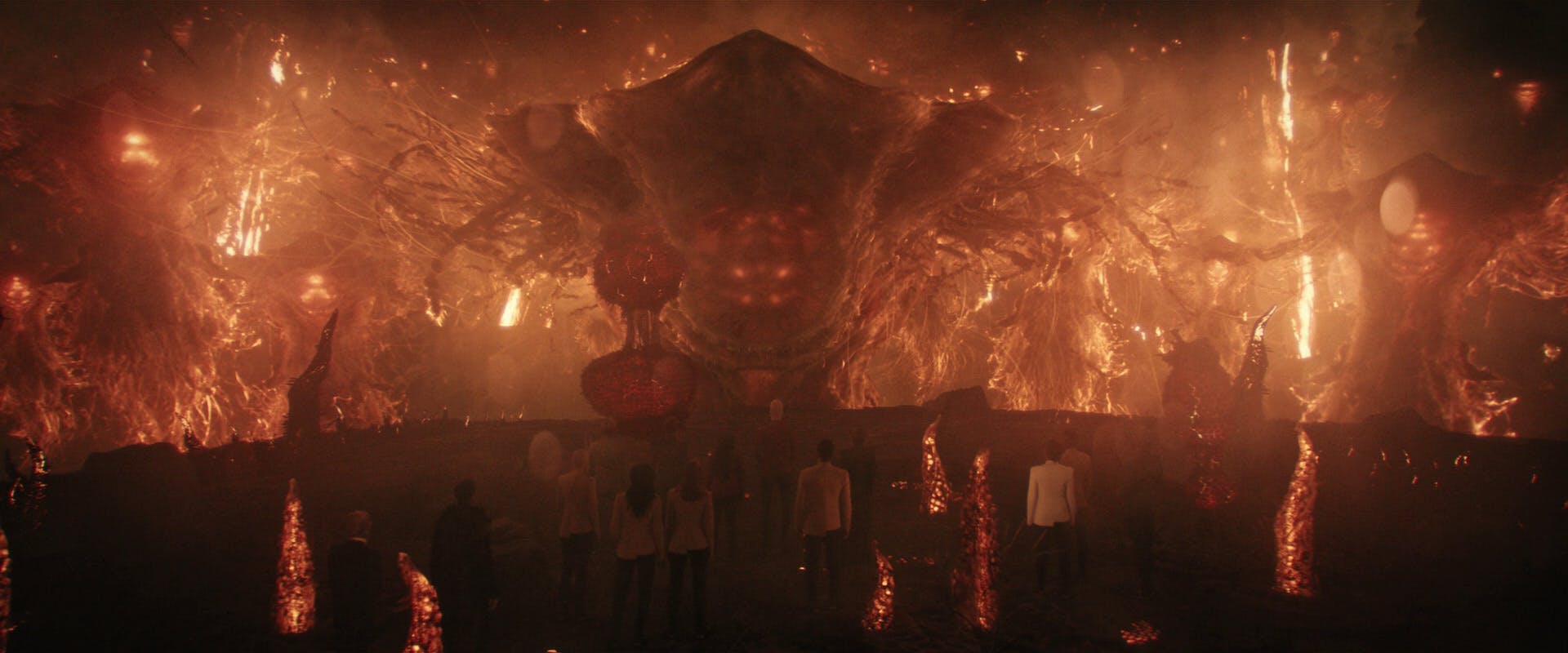
"Coming Home"
StarTrek.com
As the designation the Federation assigned to the culture that constructed the DMA, Unknown Species Ten-C did not reflect the highly-advanced civilization's actual name. With their planet having undergone a cataclysm, Species Ten-C relocated to another star system and fabricated an immense hyperfield to maintain their privacy.
Unaware that their DMA caused harm to other sentient life, the Ten-C unleashed it upon the galaxy to mine the boronite necessary to power the field. Captain Burnham and her crew discovered that the Ten-C communicated by emitting hydrocarbons and light patterns to express emotional inflection and context, a revelation that enabled them to convince Species Ten-C to halt the DMA and attempt to clean up the toxic mess it left behind in "Coming Home."
The Kellerun Commander

"Face the Strange"
StarTrek.com
Before reemerging in Discovery's "," our sole confrontation with the Kellerun occurred in 's "." Depicted as centuries long enemies of the T'Lani who engaged in a vicious war involving biomechanical gene disruptors, the Kellerun became so dedicated to peace that they were willing to kill those familiar with how to create the infectious weapon.
By the 32nd Century, Kellerun had suffered under a harsh occupation led by Primarch Tahal of the . Rayner, the Kellerun who would go on to serve as Discovery's new Number One, resisted the Breen and witnessed his entire family die on Tahal's orders. Those traumas left unimaginable scars that fostered Rayner's ongoing disdain for the Breen.
A New Day for the Selay
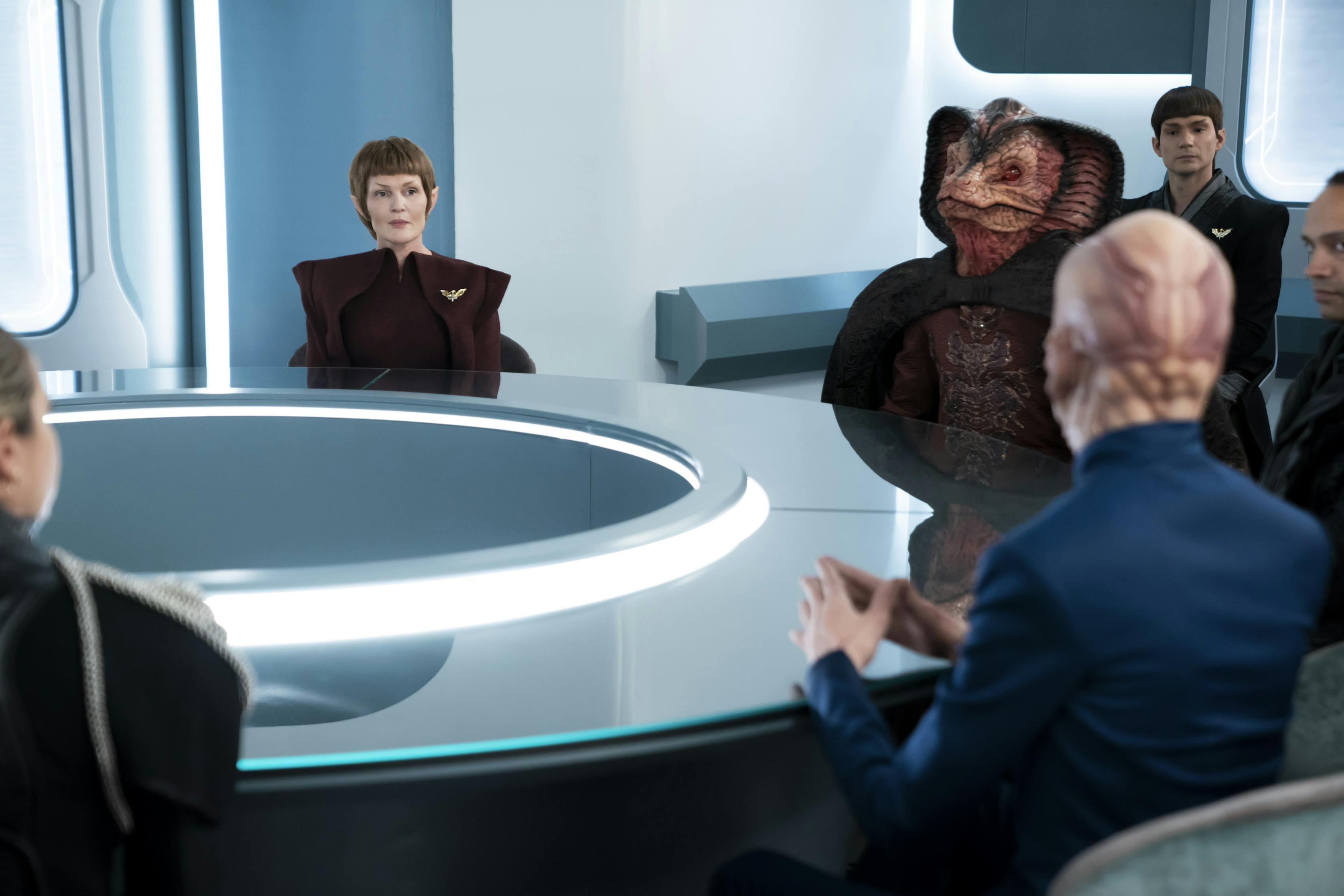
"Jinaal"
StarTrek.com
If the relationship between the Kellerun and T'Lani seemed extreme, then the Selay and Anticans' violent hijinx in 's "" will shock you even more. Though both species petitioned for Federation membership prior to their voyage, the two delegations hunted each other as the U.S.S. Enterprise-D transported them to their conference. The Anticans even took quite the interest in a meal that strongly resembled a missing Selay delegate.
In "," a Selay's attendance at an important meeting within the halls of Federation Headquarters indicated that his government's application had been approved at some point in the previous 800 years.
An Efrosian Archivist

"Labyrinths"
StarTrek.com
While an Efrosian bridge officer served aboard the U.S.S. Saratoga when Admiral Kirk took his jaunt through time in , the Federation president from stood as Star Trek's most famous Efrosian until Discovery's "."
That installment brought us Hy'Rell, the delightfully chipper and well-read Efrosian archivist who spent her days assisting visitors to the Eternal Gallery and Archive. Eager to share her extensive knowledge and greet all those who came in peace, Hy'Rell nevertheless proved willing to raise the library's shields, threaten to sentence troublemakers to its oubliette, and revoke agitators' access to the station's invaluable collection of cultural treasures.
An Eclectic Committee
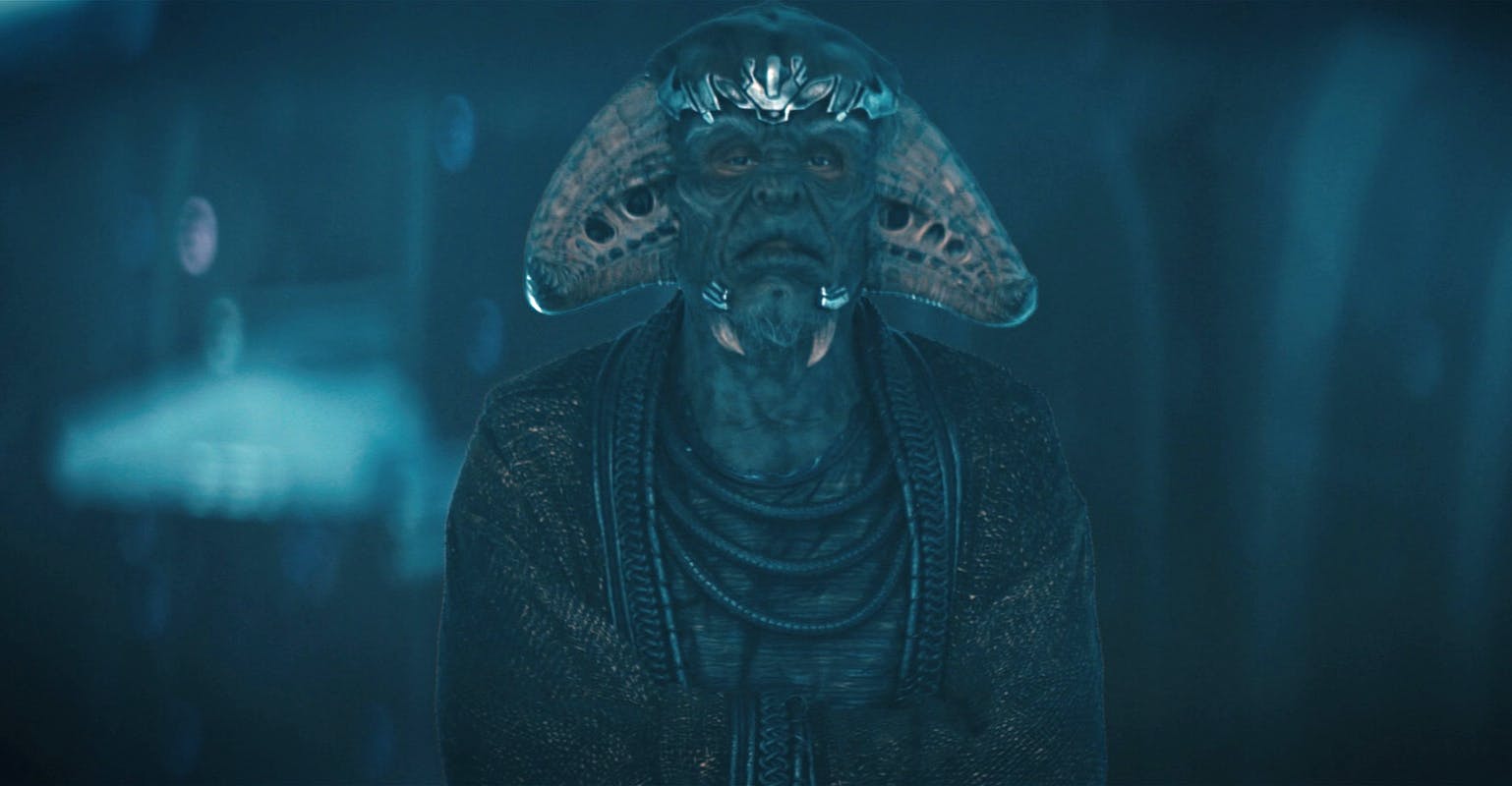
"...But to Connect"
StarTrek.com
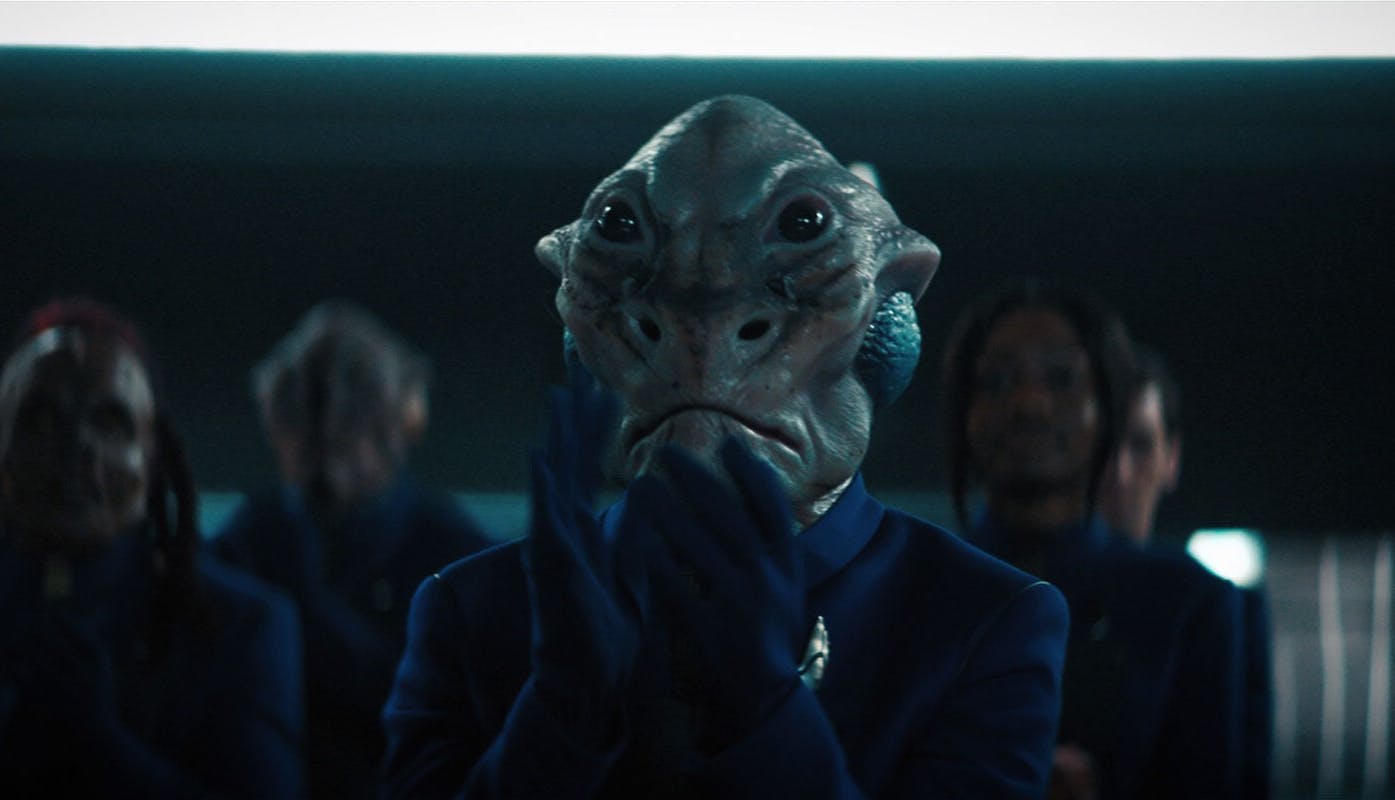
"...But to Connect"
StarTrek.com
We'd be remiss if we didn't at least mention the multitude of unnamed species present throughout Discovery's third, fourth, and fifth seasons. Most notably, many such cultures dispatched delegates to attend the Federation's DMA conference in "...But to Connect."
From a species which lost countless probes in the DMA to another that liquidated a wealth of latinum to figure out how to get a ship inside the anomaly, this grand assembly showcased the interstellar community's bustling and diverse nature.





